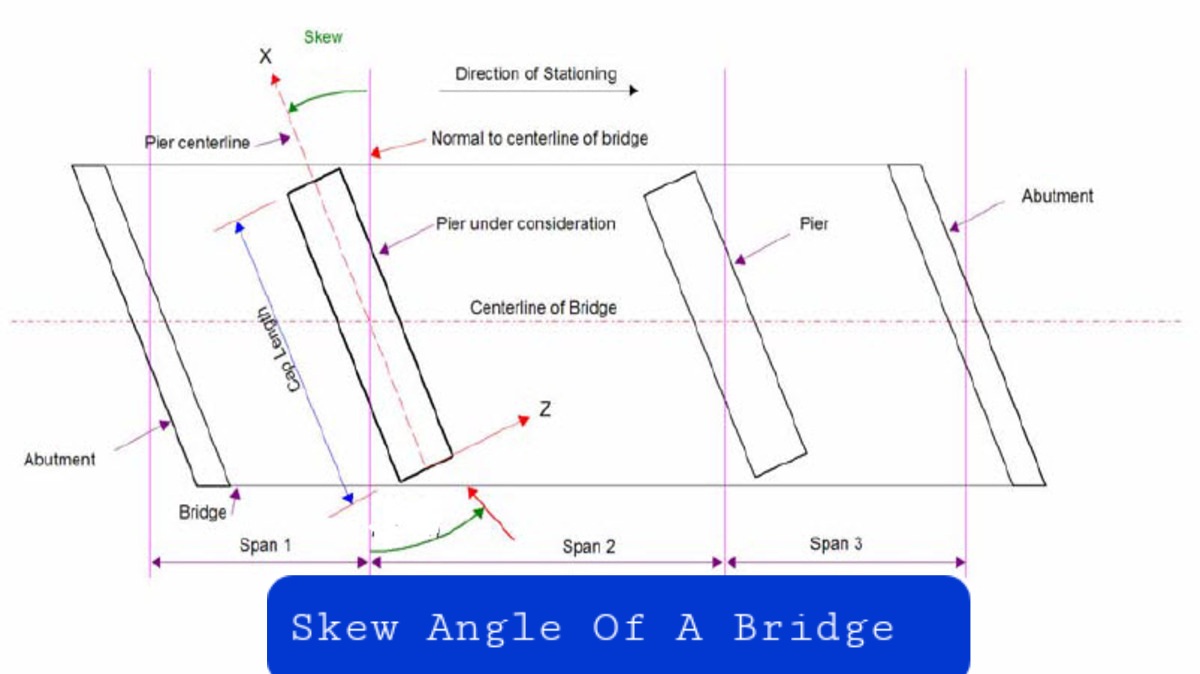In this article we will discuss about skew angle of a bridge.

Table of Contents
Introduction Of Skew Angle
The skew angle of a bridge is the angle at which the bridge is built. It’s like the bridge is tilted or turned a little bit instead of being straight across.
Sometimes, bridges need to be built at an angle because they need to go over something that’s not straight, like a river or a road. But building a bridge at an angle can be more complicated because it puts extra stress on the bridge.
Engineers need to be careful and make sure the bridge is strong enough to handle the weight of cars and trucks driving on it. They use math and science to figure out the best way to build the bridge so that it’s safe and lasts a long time.
How To Calculate Skew Angle Of A Bridge?
Here is the step by step description of how to calculate skew angle of a bridge.
-
Measure the distance between the two abutments of the bridge. This is the width of the bridge.
-
Measure the length of the bridge between the abutments.
-
Determine the centerline of the roadway by drawing a straight line through the center of the width of the bridge.
-
Measure the distance between the centerline and one of the abutments of the bridge. This is the horizontal distance.
-
Measure the height difference between the abutment and the centerline of the bridge. This is the vertical distance.
-
Calculate the tangent of the skew angle using the following formula:Tangent of skew angle = vertical distance / horizontal distance
-
Determine the skew angle by taking the inverse tangent of the value obtained in step 6 using a calculator or a trigonometric table.
FAQ
The skew angle is the angle between the bridge deck and the perpendicular axis of the roadway it crosses. It’s important because it can affect the bridge’s structural integrity and its ability to handle traffic loads.
The skew angle is determined by analyzing site conditions and traffic patterns. Factors that influence it include the shape of the roadway, direction of traffic flow, adjacent structures or natural features, type of materials used, expected traffic loads, and environmental conditions.
